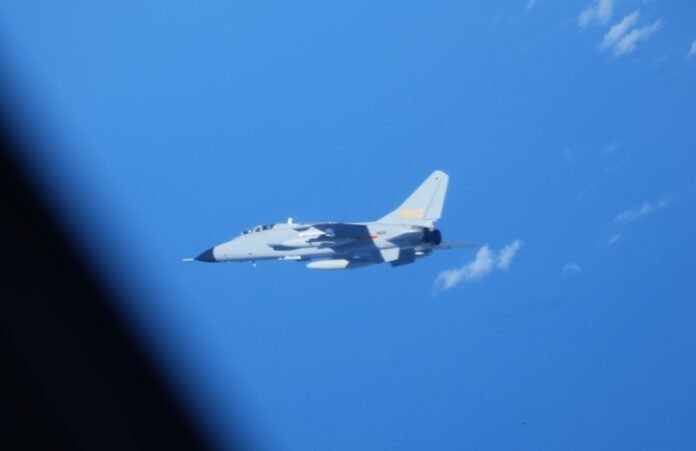Aircraft from Japan—a treaty ally of the United States—and China have reportedly been involved in another close encounter, following similar incidents yesterday and last month.
In the most recent incident on Thursday, a Japanese intelligence-gathering aircraft was intercepted by a Chinese plane. The Japanese aircraft was flying over the East China Sea, where Japan and China have ongoing disputes over energy exploration and the sovereignty of the uninhabited Senkaku Islands, which are administered by Tokyo but claimed by Beijing as the Diaoyu Islands.
Newsweek has contacted the Chinese defense and foreign ministries for comment via email.
Why It Matters
Under a U.S. maritime containment strategy, Japan forms part of the First Island Chain—along with Taiwan and the Philippines—in the Western Pacific. This defensive line is intended to limit China’s military activities within its immediate waters in the event of war.
In response to China’s growing military presence around the First Island Chain, Japan has been closely monitoring Chinese air and naval operations in nearby airspace and waters.
What To Know
Japan’s Defense Ministry announced that a YS-11EB intelligence-gathering aircraft was intercepted by a Chinese JH-7 fighter-bomber on Thursday morning over international waters above the East China Sea. The horizontal and vertical distances between the two aircraft were 196 feet and 98 feet, respectively.
The defense ministry described the Chinese aircraft’s maneuver toward the Japanese plane during the incident, which lasted for 10 minutes, as “an unusual approach,” warning that it could lead to a collision and urging the Chinese side to prevent a recurrence.
Japan’s Defense Ministry added that there was no damage to the Japanese aircraft—assigned to the Air Self-Defense Force—and no injuries were reported among its crew.
A similar incident occurred on Wednesday morning when a YS-11EB was intercepted by a JH-7 at an unspecified close range for 15 minutes, again while flying over international waters in the East China Sea.
The YS-11EB aircraft was conducting surveillance, the ministry said in a press release, without providing further details about the mission or the exact location of the encounter.

Japan’s Defense Ministry
It remains unclear whether the incidents involved the exact same Japanese and Chinese aircraft.
In early June, a Japanese patrol aircraft was intercepted by Chinese fighter jets launched from an aircraft carrier on the eastern side of the First Island Chain. Beijing accused Tokyo of conducting “dangerous actions” that interfered with the warship’s training activities.
In 2013, China established an air defense identification zone over the East China Sea, outside its sovereign airspace, requiring foreign aircraft passing through the zone—which is not internationally recognized—to notify the country’s aviation authority upon entry.
In addition to China, other countries bordering the East China Sea have established their air defense identification zones in the interest of national security, a Newsweek map shows.
What People Are Saying
Senior Colonel Wu Qian, spokesperson for China’s Defense Ministry, said in December 2024: “China is willing to continue maintaining communication with Japan to properly address maritime and air emergencies. We hope that Japan will work with us in the same direction, take the overall situation into consideration, follow the right path, and jointly keep the maritime and air situation and the bilateral relationship stable.”
Japan’s defense white paper in 2024 read: “China has been rapidly building up military capabilities while intensifying its activities in the East China Sea, where the waters surrounding the Senkaku Islands are, as well as in the Pacific.”
What Happens Next
It remains to be seen whether China’s Defense Ministry will disclose details of the most recent encounters.


























